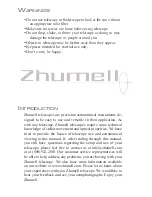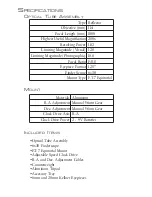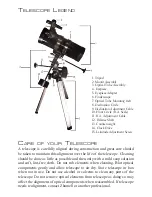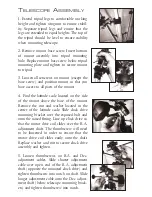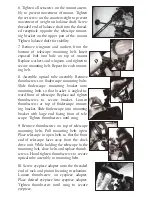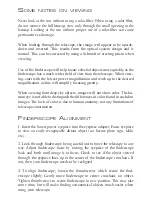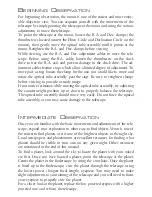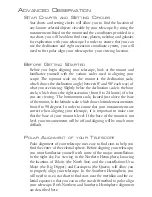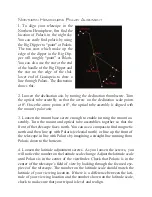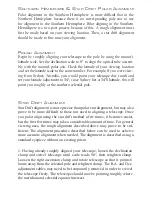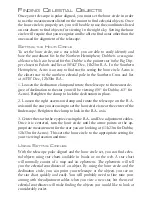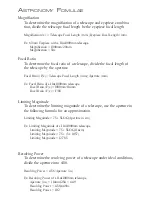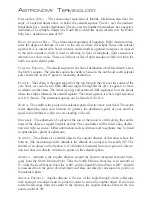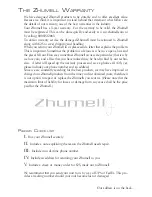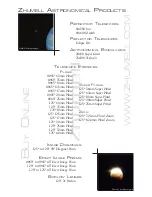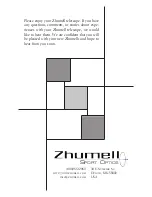
S
OUTHERN
H
EMISPHERE
& S
TAR
D
RIFT
P
OLAR
A
LIGNMENT
1. Having already roughly aligned your telescope, loosen the declination
clamp and swivel telescope until scale reads 90°, then retighten clamp.
Loosen the right ascension clamp and rotate telescope so that it points 6
hours away from the celestial pole and retighten clamp. The R.A. and Dec.
adjustment cables may need to be temporarily removed in order to swivel
the telescope freely. The telescope should now be pointing roughly where
the meridian and celestial equator intersect.
2. Find a bright star in the viewfinder of your telescope and use the R.A.
and Dec. adjustment cables to center it in the crosshairs. Work up to your
most powerful eyepiece, centering the star in the viewfinder each time you
replace the eyepiece.
3. Engage the clock drive by tightening the thumbscrew which connects
it to the R.A. axis of the mount. Turn on the clock drive, ensuring that it
is set to the correct hemisphere setting. Let the clock drive run for about 5
minutes.
4. Look into the eyepiece after the clock drive has run for about 5 minutes
to see which direction the star has drifted. If the star has drifted to the right
(left in the Northern Hemisphere) in the eyepiece, the mount is pointed too
far to the west. If the star has drifted to the left (right in the Northern Hemi-
sphere), the mount is pointing too far to the east. To correct this, loosen the
mount base screw and center the star in the eyepiece. Any drifting up or
down in the eyepiece is a result of your clock drive speed setting and can be
corrected by adjusting the clock drive speed.
5. Unengage the clock drive. Loosen the right ascension clamp and rotate
the telescope back 6 hours (opposite the direction you rotated it in step 1).
Find a bright star in the viewfinder and center the star in the viewfinder.
Center this star in the highest power eyepiece as you did with the previous
star. Reengage the clock drive and turn it on, letting it run for another five
minutes.
6. Check to see which way this new star has drifted. If the star has drifted
to the left (right in the Northern Hemisphere) in the eyepiece, the mount
latitude setting is too low. If the star drifts to the right (left in the Northern
Hemisphere) in the eyepiece, the mount latitude setting is too high. Adjust
the latitude setting until the star is centered in the field of view. Again, any
drifting up or down in the eyepiece is a result of your clock drive speed set-
ting and can be corrected by adjusting the clock drive speed.
7. Repeat this process as needed until you are satisfied with the alignment
of the telescope. The more closely polar aligned your telescope is, the more
accurate it will track stars.
Star Drift alignment is more precise than polar star alignment, but may also
prove to be more difficult to those not used to aligning a telescope. Once
you polar align using the star drift method a few times, it becomes easier,
but the first few times may take a considerable amount of time. For general
viewing uses, the rough alignment described above may prove to be suf-
ficient. The alignment procedure described below can be used to acheive
more accurate alignment when needed. The alignment is described using a
standard eyepiece without an erecting prism.
Содержание ECLIPSE 114
Страница 1: ...ECLIPSE 1 1 4...


